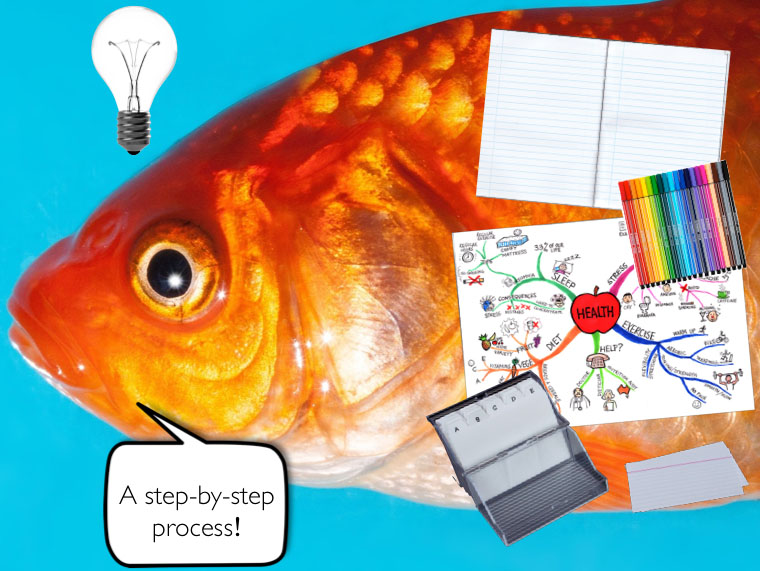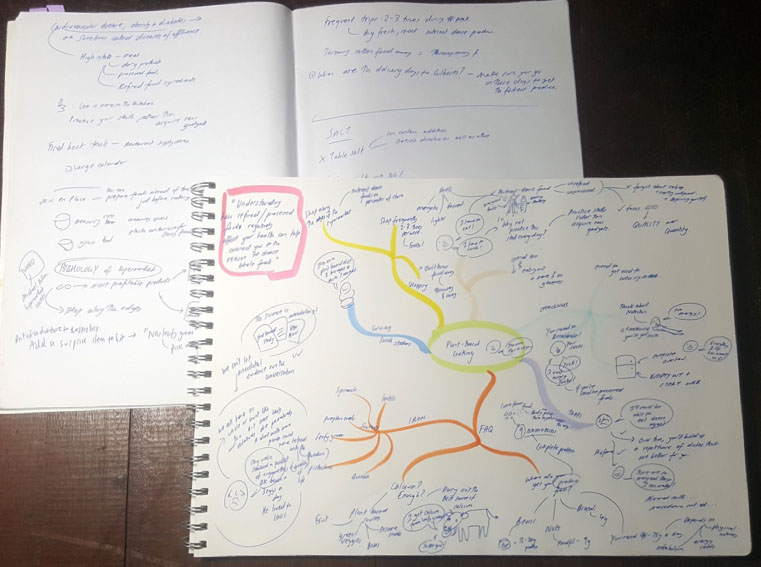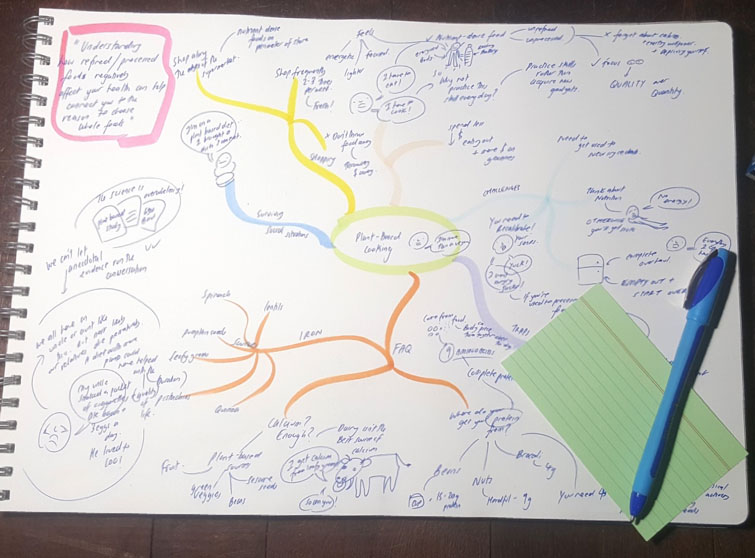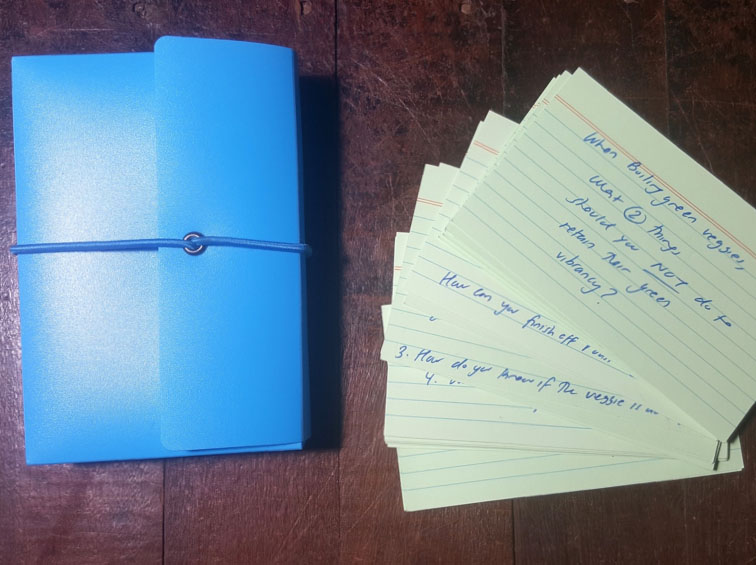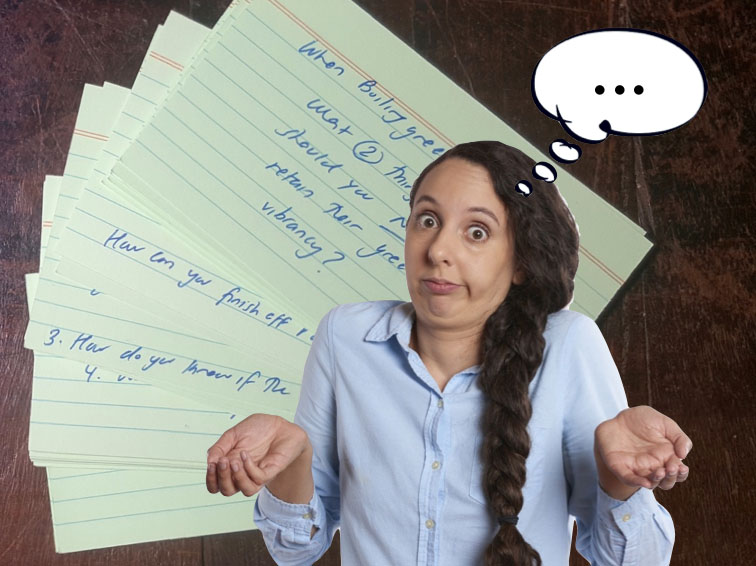Do you need to learn and retain a large amount of information? Feel out of practice or have no idea how to go about doing this?
I’ve developed a simple process that you can use to help make information stick and stay in your brain for a long time.
This process has helped me to achieve degrees in law and psychology and a PhD. I’m now using it to learn the science of cooking in an online course. I use it to learn all my presentations.
In short, you can use this process to help you learn pretty much anything!
This process is easy but it does require doing more than simply reading your books and highlighting a bit of information. It takes a bit of work but I can assure you, it’s well worth the effort.
Here is how I learn information …
1. Eliminate distractions from the outset
Before I start reading or watching a video lecture, I eliminate any potential distractions in my environment. I create a focus force field.
We know from research that distraction is the enemy when it comes to learning. If I am switching from my textbooks to a random YouTube video and then back to my books, very little information is going to stick. It’s going to take me twice as long to study.
So to save time, I put on a pair of noise blocking earmuffs, clear away any visual clutter and close my door. I also activate an Internet Blocker application (Freedom) so I’m not tempted to check social media when things get difficult or uncomfortable. You can read more about how to create an effective focus force field here.
2. Take messy notes by hand to capture key ideas
I grab all the equipment I need for the learning task. If I’m watching a lecture, I need a pad of paper, a pen, post-it notes, headphones and a glass of water. Once I’ve got everything I need, I let the note-taking process begin! I start taking notes by hand, pausing the video lecture whenever I need to.
Why don’t I take notes on my laptop?
Because research shows you remember more when you take notes by hand.
My notes are usually messy but it doesn’t matter. These notes will soon be tossed in the bin. Here’s why …
3. Transform messy notes into messy mind maps
After a few days have passed, I take my messy notes and transform them into a mind map or set of mind maps. For this task, I need A3 paper, coloured pens and noise blocking earmuffs.
Through mind mapping, jumbled thoughts and ideas become organised in my mind.
Key parts of the mind mapping process include:
If I’m feeling tired and come across a topic that I don’t feel like mind mapping, I never force it.
Here’s a tip: when it comes to mind mapping you need to keep moving. If you feel bogged down by a certain idea, leave it and make a note to come back to it later.
Or simply take a break. Have a healthy snack, a glass of water and get some fresh air. Mind mapping can be tiring. You need to pace yourself.
You also want to avoid getting stuck in a perfectionist loop. Mind mapping isn’t about creating a work of art. A bad drawing is better than no drawing if it helps you understand and retain information. I remind myself of this simple fact every time I sit down to mind map.
4. Give the mind map(s) a rest for 24 hours and then review
Once I’ve finished my mind maps, I leave them for 24 hours. The information simmers away in my mind but I know some of it will start to evaporate/leak out as time passes.
This is why it’s critical that I go back and review my mind maps. I make myself a warm drink, find a comfy chair and grab a pencil, highlighter or crayon. As I review the information, I circle key ideas that are important to remember. I then go and do something else for a few hours.
5. Create a set of flash cards
A few hours later, I take the ideas I’ve circled on the mind maps and transfer them onto palm cards. I write a simple question on one side relating to a key bit of information and I write the answer on the back. I like to draw absurd pictures wherever possible to illustrate the information as it helps me to retain it.
6. Retrieval practice
A few days later, I take out my flash cards and practise going through them. I read the question and before I flip it over to read the answer, I force myself to get the information out of my brain. This is retrieval practice.
I’ll admit, this isn’t always easy to do and it can hurt your brain. But it’s a good kind of pain. I know I’m fast tracking the learning process by doing retrieval practice.
If I get bored of going through my flash cards, I try a different retrieval strategy.
Here are some different retrieval practice strategies I like to use:
When I get to the point where I’ve exhausted my memory with the retrieval strategy, I stop. I make sure I look at the original mind map and/or my flash cards to identify what I got right and what I still don’t know very well. Then …
7. Focus on gaps in knowledge
What happens when I can’t retrieve anything? Or I identify a gap in my knowledge after doing retrieval practice? I go back to my mind maps and review those crazy images and the information. If the mind maps weren’t particularly good in the first place (e.g. they lack key bits of information), I’ll go back to my books and add some extra content to the mind maps or I’ll create some new flash cards.
Sometimes I’ll create a big overarching mind map (pulling together dozens of mind maps) to further consolidate the information. This is what I used to do before every law exam. Once I’d finished creating dozens of mind maps, I’d create one jumbo A3 mind map that pulled together all the different concepts. This would often lead to ‘Aha!’ moments and a deeper understanding of the content.
8. Keep doing retrieval practice

Retrieval practice can’t be a one off event. I tell myself I need to keep at it. For best results, I know that I need to space out my practice. Doing retrieval practice in one big chunk right before the test is a recipe for failure or at best, average results.
Being organised and a bit of planning is key to effective retrieval practice. I plan times in my week (10-15 minute slots) to review certain topics.
I have a box that I fill with my flash cards on different topics (labeled in alphabetical order). When I look at my calendar and see it’s time practice retrieving information on a certain topic, I simply grab the cards on that topic and go!
The beauty of flash cards is they are small and portable. Whenever I have a spare 2-5 minutes, I can get some practice in!

To sum up
I realise this sounds like a lot of work. Following this process properly requires an investment in time, a bit of planning and persistence. But once it becomes a habit, you’ll find it’s easy to execute.
Yes, it takes more work than simply reading your textbooks and highlighting huge amounts of information. But it’s a more satisfying and rewarding way to learn. Why? Because the information will stay with you for a long time. You won’t simply remember it for the test and forget it afterwards.

